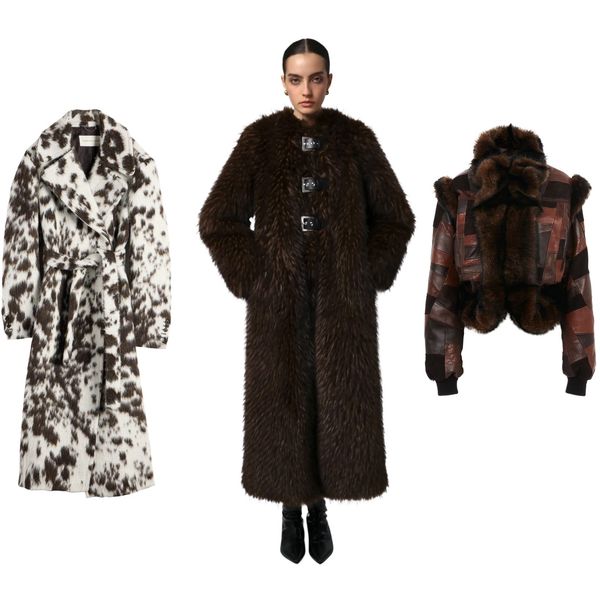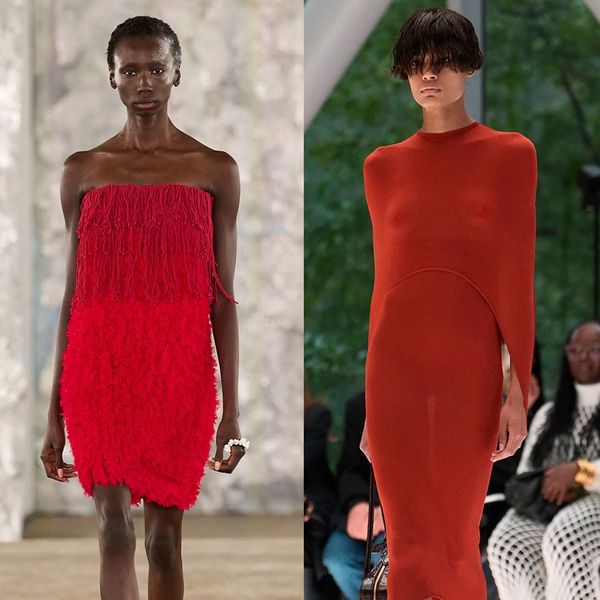Charlotte Gainsbourg on Directing 'Jane by Charlotte' and Finding Her Personal Style
The daughter of Jane Birkin gets candid about her relationship with her mother and how it has influenced multiple aspects of her life.
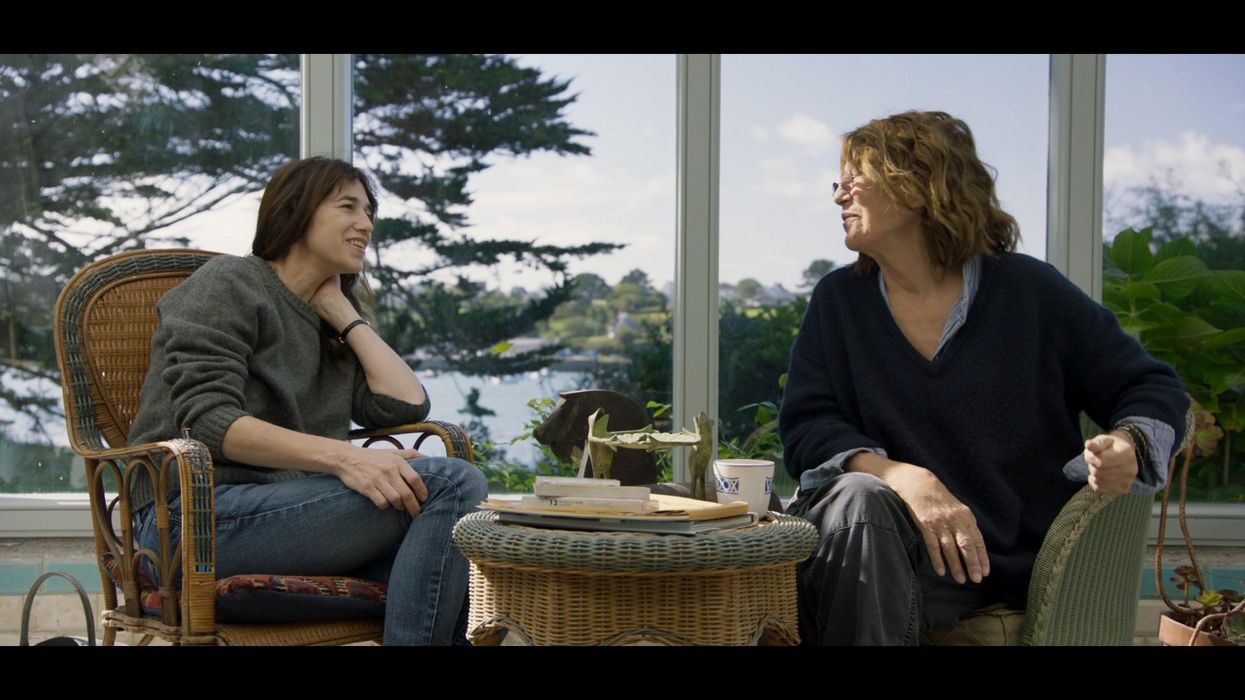
In her directorial debut Jane by Charlotte (out May 6), Charlotte Gainsbourg explores her complicated relationship with her mother Jane Birkin by posing a series of personal—and at times awkward—questions to the actress and fashion icon. In America, Birkin is captured in a handful of old photos that encapsulate the 1970s style iconography dubbed by modern media. She's known for her piece-y bangs, doe eyes, and the emblems of the style of that era: shrunken t-shirts, blue jeans, and mini dresses. Except that's not the person the film explores nor the woman Gainsbourg has come to know.
That caricature is, however, the shadow Gainsbourg, 50, grew up in. “I could only compare myself to my mother,” she says of her childhood. Both women developed a complex relationship with what they call “tomboy style” (or what we might define as androgyny). Birkin adopted this tomboy style into her wardrobe in an attempt to divert attention from her appearance to her work, while Gainsbourg both fell under the influence of her mother and found it suited her figure. According to Gainsbourg, “For [Birkin], the perfect woman should have short hair and look like a boy,” a notion that complicated her relationship with femininity early on.
Gainsbourg, predestined for fashion iconism by birth, experimented greatly with clothing in her formative years. The daughter of two loyal uniform-dressers, she found her own staples (specifically jeans and sneakers). Her personal style journey charts a move from Paris to New York, having famous parents, experiencing the loss of both her father and sister, the birth of her children, close friendships, and more, all of which have affected the way she cultivates her own persona. Ahead of the film’s U.S. release (conveniently timed to Mother’s Day), Gainsbourg chatted with Coveteur about the making behind the film, personal style, and the role her mother has played in all of it.
How did you end up shooting the film on your own?
"At first, I wanted [cinematographer] Adrien Bertolle to do the light and the frames even though it's a documentary. But when I came back to France, the pandemic hit. I met with an editor, and she said, 'I don't have enough. I need 100 hours to make a documentary. So don't wait for Adrien to come. Don't wait for the whole setup to be perfect. Just go film on your own.' I was very, very nervous [about] the idea of shooting my mother, talking to her holding a camera between the two of us. When I came back with that footage (that was really badly shot because I didn't know how to use that camera), my editor said, 'You've got your film.' The film is the patchwork of many different moments. I needed the nice frames and the badly held camera. It was a mixture of everything that made it that made sense in the searching for my mother.
When you hear the term "style icon," your mom Jane Birkin is likely the first word that comes to mind. She's encapsulated in a handful of images that exist from so many decades prior. What are your thoughts on that? How did that inform your filming style?
“The only thing I was absolutely sure of was that I didn't want any footage of her in the '70s, '80s—stuff that we've all seen. I really wanted a portrait of my mother today—her eccentricity, her crazy English side, and also all of the sadness and the suffering that she's gone through. I wanted to talk about aging, about her as an actress, and also being in front of a photography camera. I understood that it's something she's always loved doing. For me, it's something that I've always hated. It was interesting for me to understand. She was so perfect, more than perfect. She wasn't embarrassed about herself at all. It was interesting...she was more embarrassed by film than still photography.”
In the film, you both talk about “tomboy style” in such an interesting way—how she used that at a moment in her life when she wanted people to focus more on her work. Have you used “tomboy style” in the same way in your life?
“I have a different relationship with it because [my mother] sort of imposed that on me when I was a child. My sister Kate had long hair. She looked like a girl. She was beautiful. I had more of a round face. [My mother] cut my hair short. I was in a school with a uniform, and she used to buy me the boys uniform. I don't think that's where the embarrassment or the awkwardness I carry came from, but it didn't help to feel that I was a girl or would potentially be a woman one day.
Just before I lost my father, I cut my hair short. She always wants me to cut my hair. Always. And she wants my children to cut their hair. For her, the perfect woman should have short hair and look like a boy. I have an androgynous body so [the clothing] goes with the body I have.”
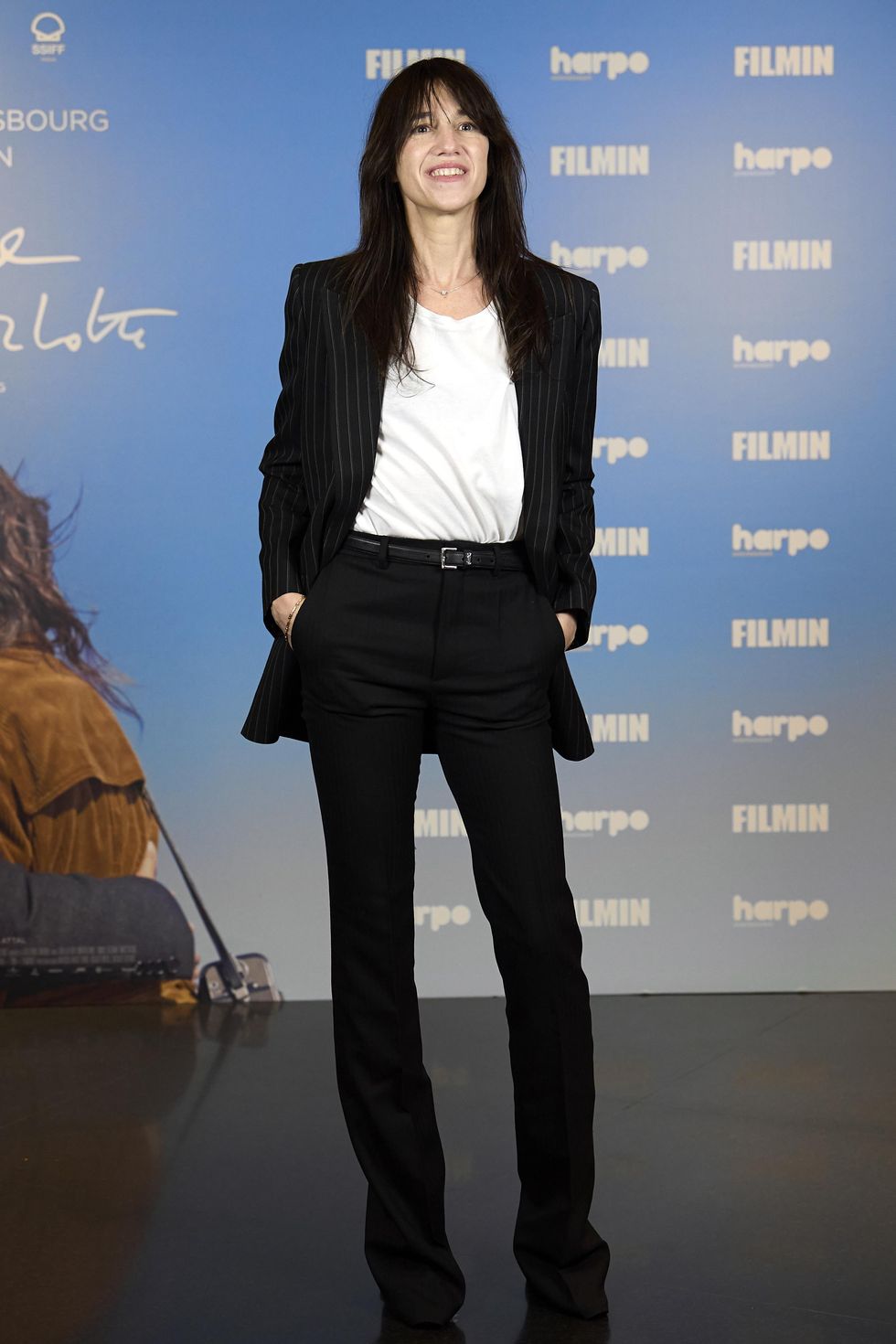
Charlotte Gainsbourg attends the Jane by Charlotte photocall in Madrid, Spain;
Photo: Getty

Charlotte Gainsbourg attends a screening of Jane by Charlotte in Deauville, France;
Photo: Getty
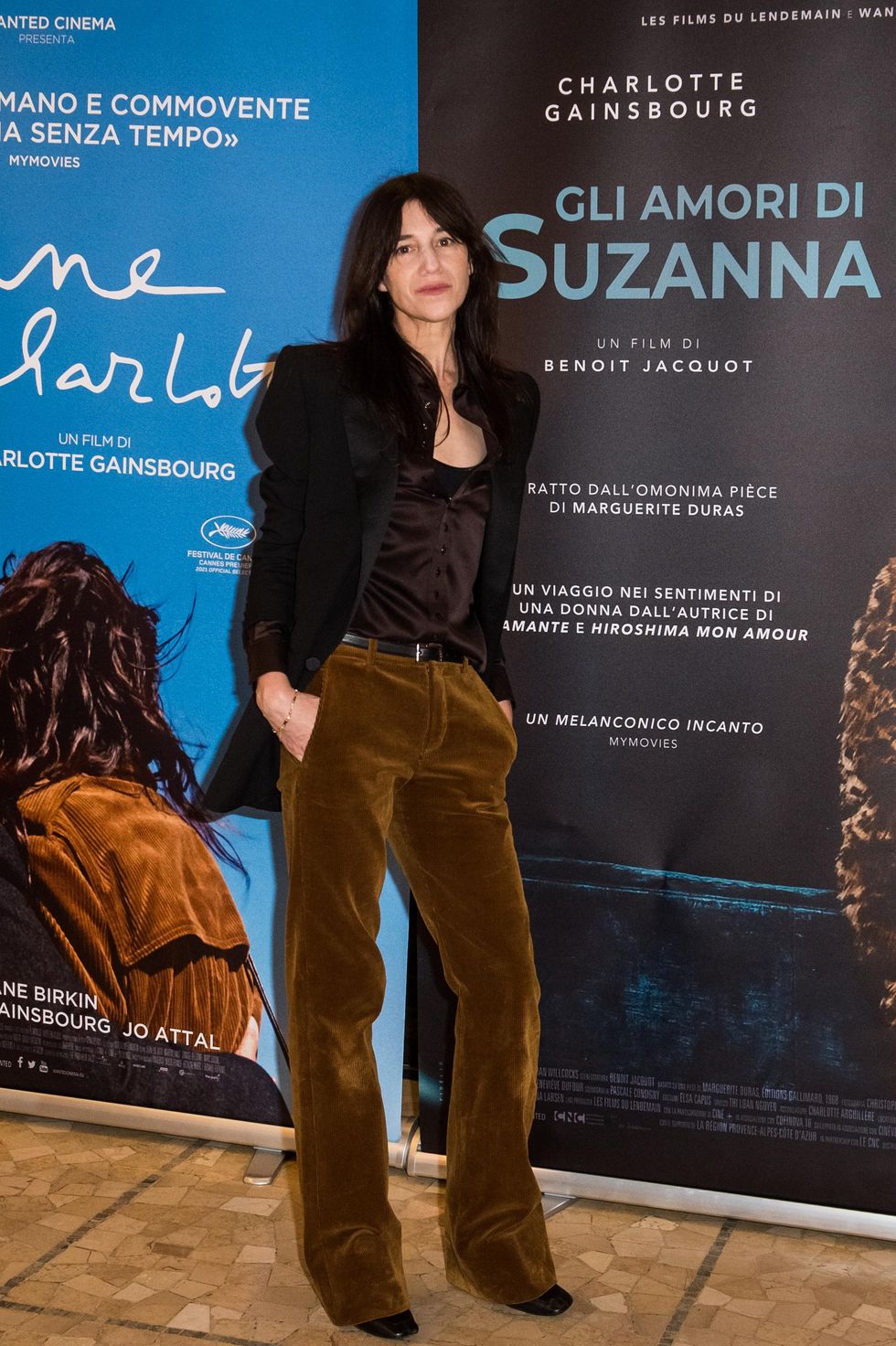
Charlotte Gainsbourg attends a screening of Jane by Charlotte in Milan, Italy;
Photo: Getty
Growing up, how did you come to terms with how you wanted to express yourself through clothing or art with such public-facing parents?
“I was very self-conscious. Even though I started doing films when I was 12, I was so young. I didn't [think] Am I capable or not? I just did it because it was fun, and I enjoyed it. But the physical part, I really, really hated myself. I could only compare myself to my mother and felt that I was so ugly in comparison. It was really tough. I'd say for the past 20 years it's been easier and easier, but, still, it wasn't easier because I felt beautiful. It's easier because I feel okay not being as beautiful.
In terms of what I was wearing, I did explore my own style. It's so embarrassing to see pictures because it was horrible. I had such bad taste. And then I went into full-on vintage clothing because I was shooting a period film [The Little Thief] set after WWII. I was completely obsessed with '50s style, which is not the best. Once I met Yvan, my partner, I [didn't think I] could dress as a woman; I felt I didn't have a [feminine] body. So I could only wear pants. Of course, I like dressing up, but for my own day-to-day life, it was only jeans, t-shirts. It was always the same.
My parents had uniforms. My father had maybe 10 pieces of clothing in his closet. That's it. He was wearing the same things every day. I felt that was the way it was done. So I never had a lot of different things. Later on, I had a very close friend, Nicolas Ghesquière, who started at Balenciaga. It was such a strong relationship for me to mix friendship and fashion. For the first time, I was paying attention to fashion thanks to him. Also, thanks to my sister Kate, because she started [taking] pictures of me. She loved fashion so she dressed me up, but I was really playing doll.”
In the film, your mom is so sentimental with material items. Do you find that you're similar in this way?
“I tend to keep things for a very, very long time. I put them in boxes so I don't have to have to deal with letting go or keeping. Very often time does it for me. I lose things or I've had a lot of stuff ruined because I put everything in the basement. (French basements have [such] humidity.) I lived in New York for six years with my two daughters. My little one went from three to nine. All her stuff, everything I kept, was shipped on a boat to Marseille and [were burned in a fire]. It's horrible, but at the same time, it's a way of dealing with it. There's nothing you can do, so you cry, but then it's just gone. So it did help me think about material things [as] not that big a deal.”
Are there any items of clothing that your parents have left you that you hang on to?
“This coat that I put on when my father died, I still have. My mother told me quite recently, ‘You put on your father's coat, and you said to me, I want to look like him.’ I have no memory of this. I was 19, but I guess she didn't invent it. I have, of course, his shoes, his white Repettos that I treasure. There's a t-shirt where it's written 'Jane' that's his and a pink t-shirt of hers that says 'Serge.' She also gave me two jackets that were from Saint Laurent. And a dress also. I keep them, but I don't look at them. You just know they're there.”

Charlotte Gainsbourg with friend and Saint Laurent co-creative director Anthony Vaccarello;
Photo: Getty
Now that you're older, have you embraced any sort of uniform? And is there any solace in developing a uniform that makes you feel comfortable?
“I always go back to jeans. That's the only thing I can wear. I'm always on the floor. Now I have a dog. I need to feel comfortable. So it's a question of finding the right pair of jeans. That's another very, very, very big subject for me. And sometimes I change. For the past [few] years, it's been only Saint Laurent—Anthony Vaccarello—and he's done different styling of jeans. I was lucky enough that he made a jean for me that fit perfectly. But now I'm into more baggy [styles]. I don't want to feel stiff anymore. [Jeans] and tennis shoes are the only things I cannot let go of. And then I tend to love oversized things. I love a men's black coat; you can never really go wrong with that. I think I'm copying my mother now because she got really into men's clothes very early in the '80s. I tend to do the same thing now.”
There's something powerful about putting on men's clothes.
“I love [when] my daughter wears my stuff that's too big for her. Even a t-shirt that's too big on a kid I find really very charming. That’s what I find that I'm trying to imitate, but of course, it's not at all as charming.”
You've talked a lot about experimenting with anonymity when you moved to New York. Were there any risks you took style-wise when you broke away from everyone you knew?
“Absolutely. I discovered sweatpants.”
America will do that to you.
“Not at the beginning. At the beginning, I was holding on to my French Parisian style. I do a lot of yoga and Pilates and stuff like that, but I began training every other day and it became part of my lifestyle. Going out with leggings and gym clothes, it's a bit embarrassing but so easy.”
What are your thoughts on what the world has done with the term “French-girl style?"
“I don't know what it means. For me, real Parisian style would be in the '60s at a time where French women had a lot of style, and it was the beginning of prêt-à-porter. Nowadays, I feel that it doesn't really exist. But it's true that [it’s become] something more of a caricature. When I used to go to London, you would see really eccentric people that were really into fashion, but in such a crazy way, that it was a lot of fun. As soon as you passed the channel and went back to Paris, it was much more polite and correct. So I don't feel that the French style is very interesting. But I don't want to make a generality.”

